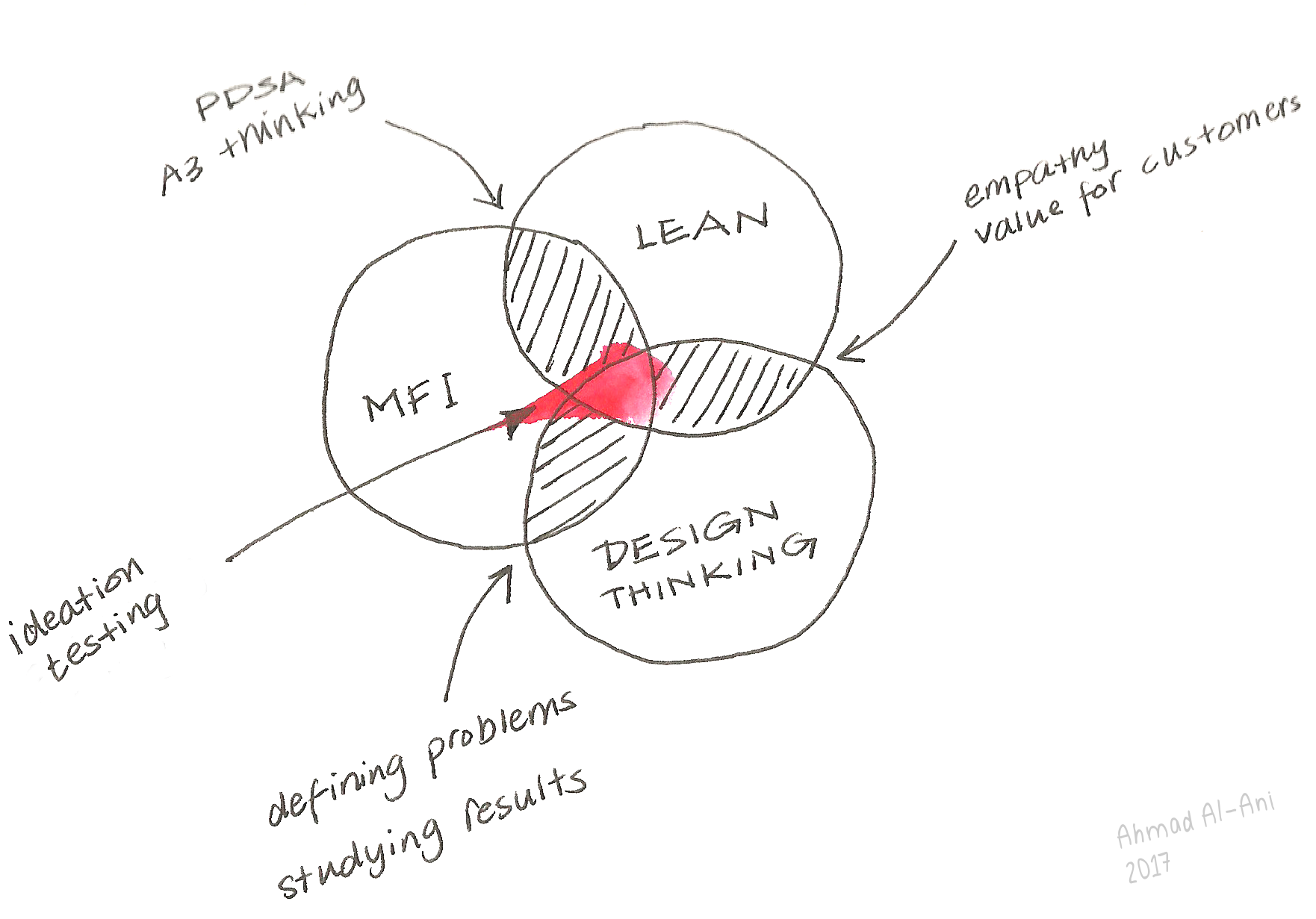Those who have worked in quality improvement and problem solving know that there is a lot in common between different improvement or problem solving methods (considering that a problem is any gap in performance according to Toyota experts), and that they more or less follow the same reasoning process, starting by understanding the problem, coming up with ideas and implementing them. Concepts like divergent-to-convergent thinking, iterations, and pilot testing are usually applied.
Lean thinking, the model for improvement, and design thinking, are just three of the problem solving or improvement methodologies that are well-known and have shown strong evidence of successful outcome in healthcare, and I believe that they could provide answers to the many issues that plague healthcare systems in the world.
Lean thinking is the term used to refer to Toyota Production System, with it’s mindset, tools and methodologies, with A3 thinking as the main frame for problem solving. The model for improvement (MFI) was developed by Associates in Process Improvement as a method for accelerated rapid changes, and is adopted by the Institute for Healthcare Improvement (IHI) as their main frame for quality improvement with many successes world-wide. Design thinking is the process of creative problem solving which was adapted from engineering to business processes, and made widely known by David Kelly, who founded IDEO and the Stanford d-school.
In my opinion, all three methods are based on the scientific method of experimentation, and aim at solving problems using human centered approach. They focus on understanding the current status and the problem at hand first, and emphasize studying the initial results before implementing the changes or solutions. The tools and techniques used in each method are all common quality and problem solving tools, perhaps with some variations among them.
Lean thinking and the MFI share the famous PDSA cycle, which is evident in Lean’s A3 thinking as the main framework for planning and implementation if improvements or countermeasures, and as a pilot testing vehicle in the MFI.
Empathy with the people needs, and defining the value from the customer point of view are shared among Lean and design thinking, and considered as the first stage in both.
Lastly, MFI and design thinking uses iterations and testing to reach the best answers possible, with repeated and linked PDSA cycles and prototyping as the major processes in each one, respectively. They also uses different tools for generating ideas at the beginning before coming up with the best ones to test.
To get my head around them and understand the similarities, I’ve come up with Venn Diagram shown.
What other similarities or differences you could think of?




